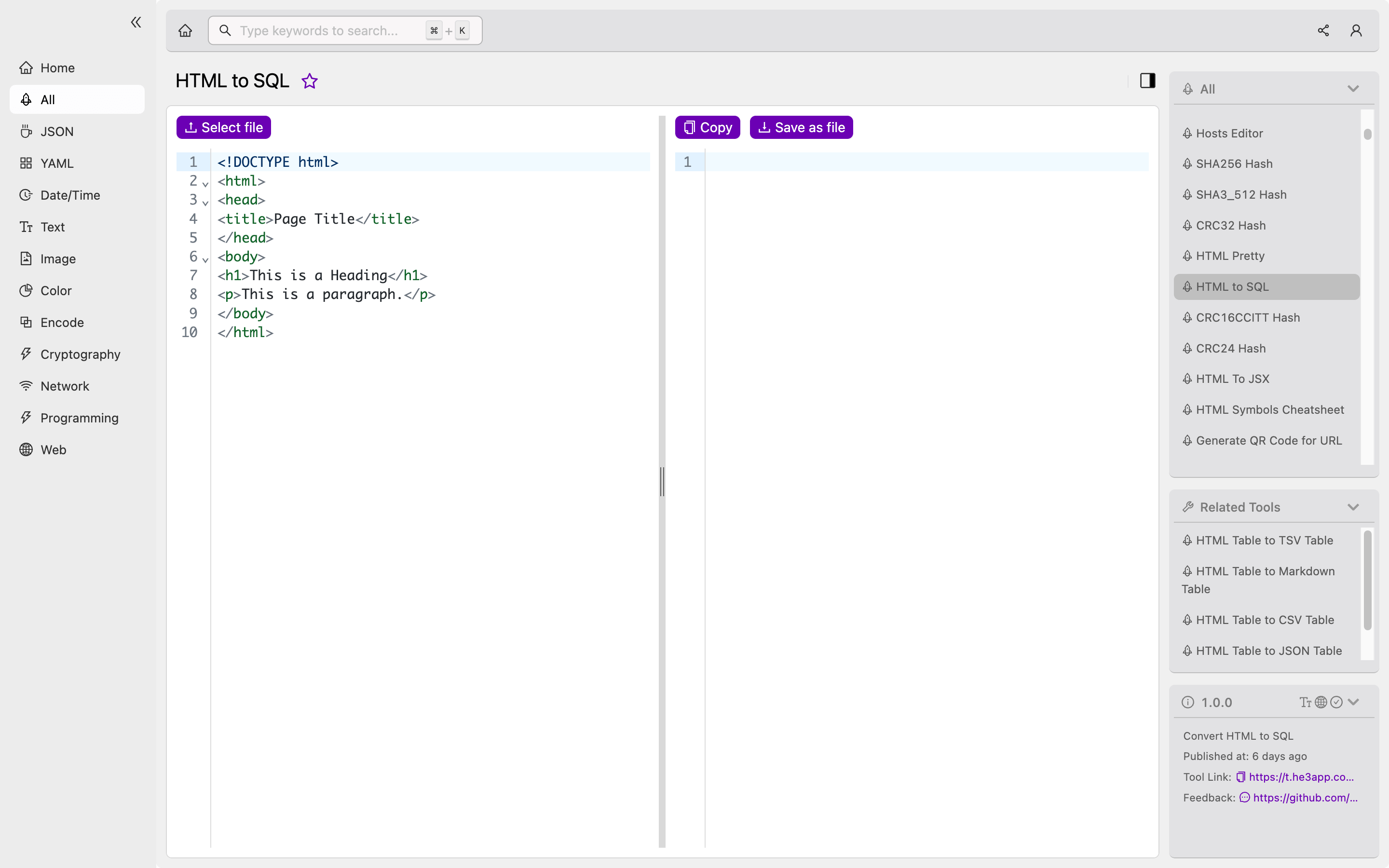Making HTML to SQL Easy: A Developer’s Guide to Effortless Data Importing
As a developer, you must be familiar with HTML and SQL, but do you know how to convert HTML to SQL? This might sound like a daunting task, but with the right tools and knowledge, it can be a breeze. In this guide, we’ll explore what HTML to SQL is, how it works, its key features, scenarios where it can be useful for developers, and common misconceptions.
What is HTML to SQL?
HTML to SQL is a conversion process that allows developers to extract data from HTML pages and convert it into SQL statements. This process is essential for those who need to store and analyze data from websites, mobile applications, and other data sources.
HTML to SQL is mainly used in web scraping, which is the process of extracting data from websites. Web scraping can be a tedious and time-consuming task, especially if you have to copy and paste data manually. However, with HTML to SQL, you can automate the process and speed up data extraction significantly.
How Does HTML to SQL Work?
HTML to SQL works by using a tool or code to parse HTML, identify the data you need, and store it in a database. Once you have the data in the database, you can use SQL commands to manipulate it and extract insights.
For example, let’s say you run an e-commerce website, and you want to get information about the prices of your competitor’s products. Using HTML to SQL, you can extract pricing data from their website and put it in a table in your database. You can then use SQL queries to analyze this data and adjust your prices accordingly.
Key Features of HTML to SQL
HTML to SQL comes with various features that make it useful for developers. Below are some of its key features:
-
Automation: HTML to SQL automates the process of extracting data from websites, which saves time and effort.
-
Scalability: HTML to SQL can handle large data sets, which makes it ideal for data-intensive projects.
-
Customizability: HTML to SQL allows developers to customize their scripts or tools to extract specific data from websites.
-
Security: HTML to SQL tools often come with security features that protect against SQL injection and other malicious attacks.
Scenarios Where HTML to SQL Can be Useful for Developers
As a developer, there are several scenarios where HTML to SQL can be useful. Below are some examples:
-
Website Monitoring: With HTML to SQL, you can monitor your website’s performance, gather data about your users, and optimize your site for better results.
-
Market Research: HTML to SQL can help you gather information about your competitors, including pricing, product offerings, and marketing strategies.
-
Data Collection: HTML to SQL is useful for collecting data from various sources, such as social media, blogs, and forums.
Misconceptions and FAQs
Misconception: HTML to SQL is Illegal
While web scraping can be a legal grey area, HTML to SQL is not illegal. However, you need to be aware of the data privacy laws of the websites you scrape data from, as some may prohibit or restrict web scraping.
FAQ 1: Can I Use HTML to SQL to Scrape Personal Data?
No, you cannot use HTML to SQL to scrape personal data, such as user names, emails, and passwords, without the user’s consent.
FAQ 2: Do I Need to Know SQL to Use HTML to SQL?
Yes, you need to know SQL to use HTML to SQL. HTML to SQL is a process that converts HTML to SQL, but to manipulate and analyze the data, you need SQL knowledge.
Or you can use HTML to SQL tool in He3 Toolbox (https://t.he3app.com?7lwy ) easily.

Conclusion
HTML to SQL is a powerful tool that can save developers time and effort when it comes to data extraction and analysis. It’s a useful tool for web scraping, website monitoring, market research, and data collection. He3 Toolbox is an excellent tool for HTML to SQL conversion, making the process even more accessible for developers.
References: